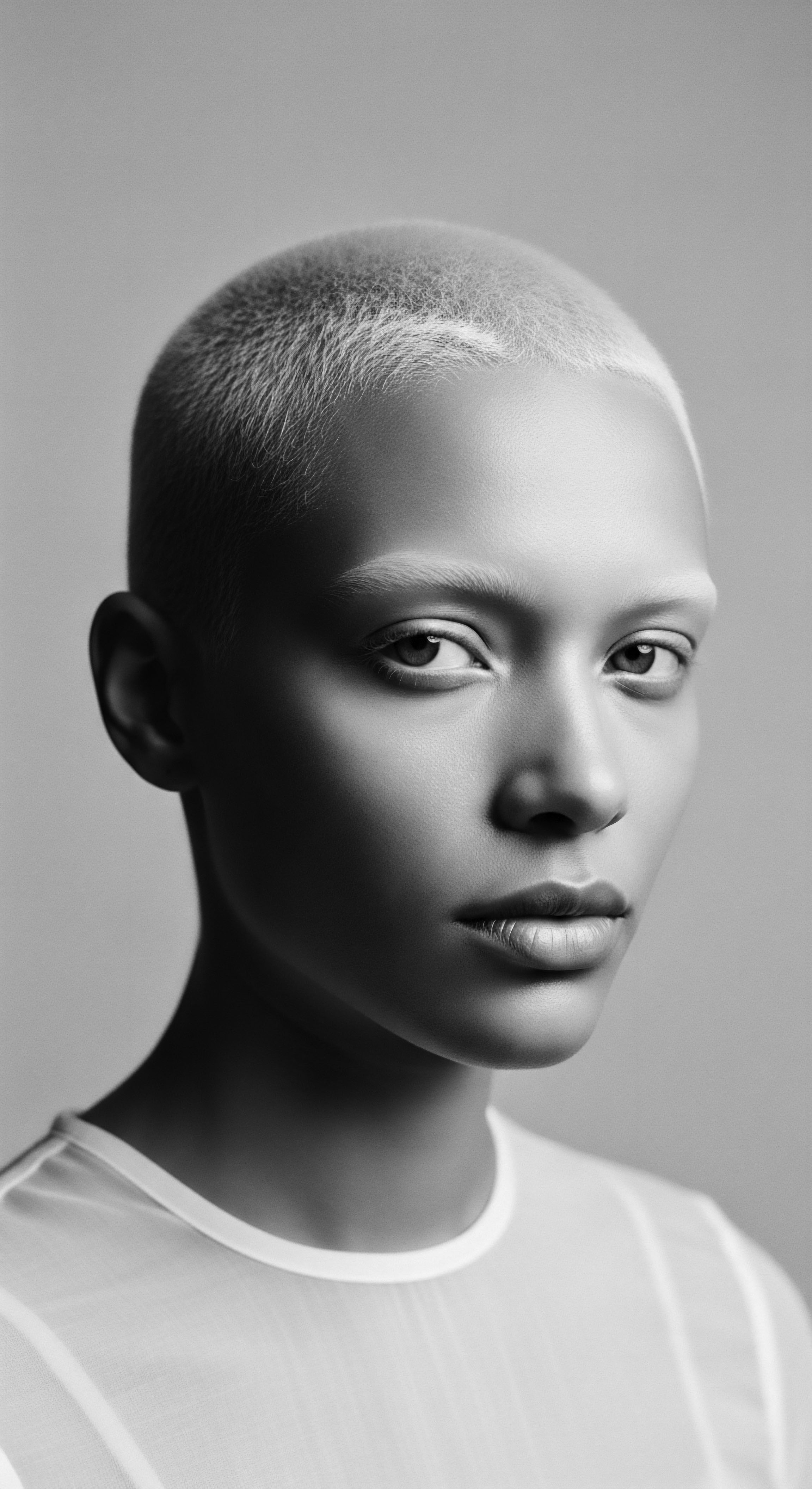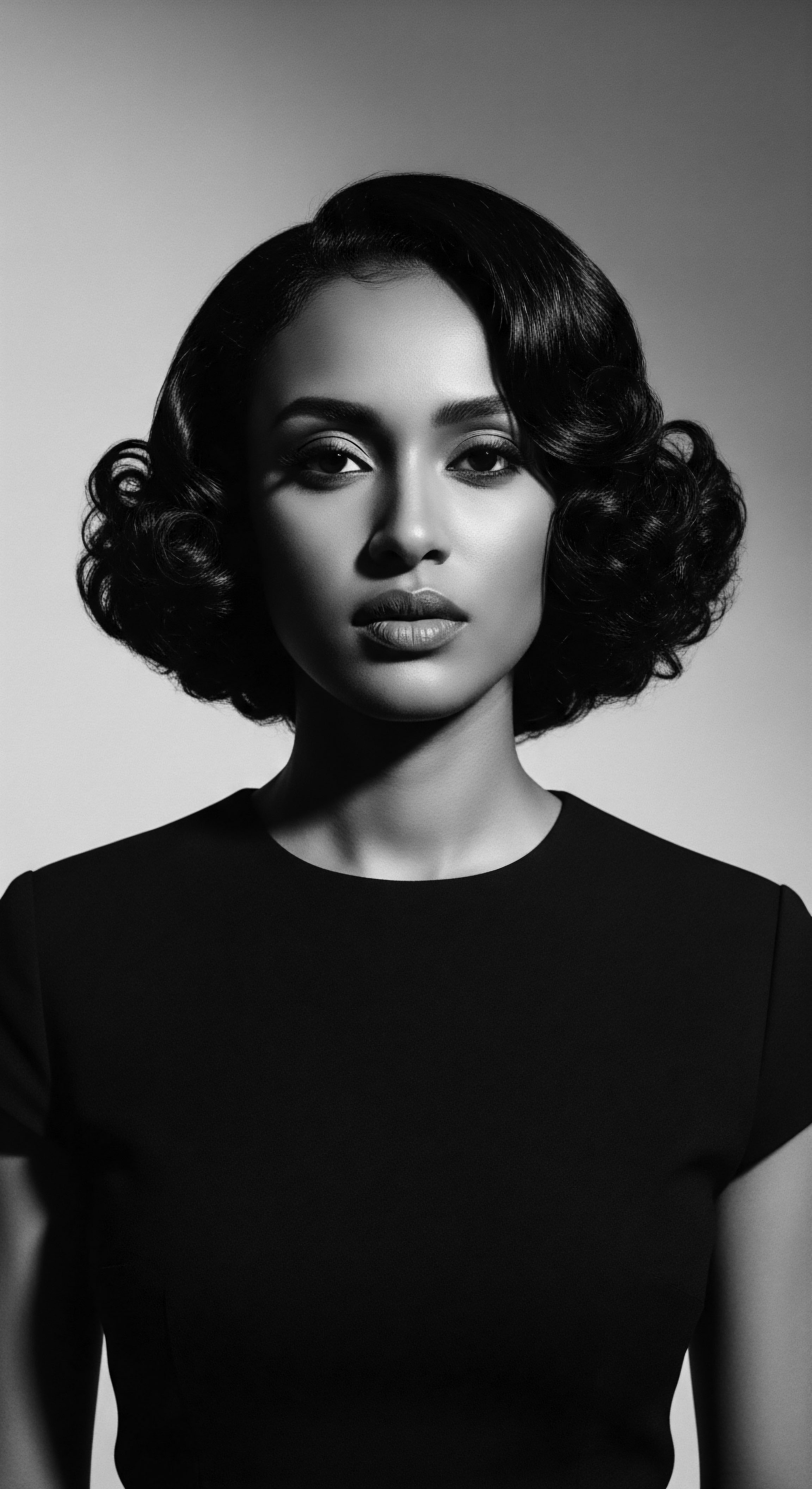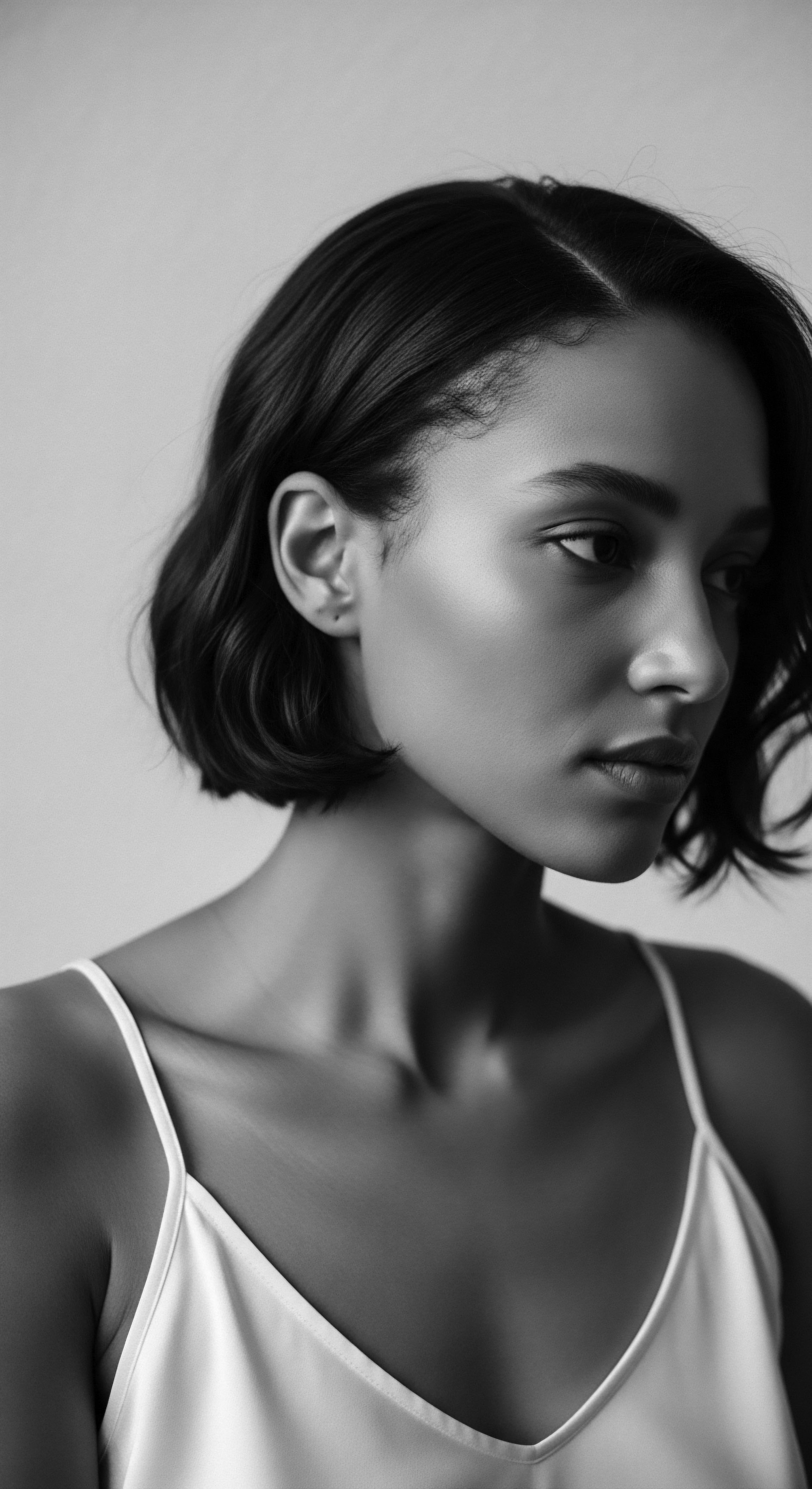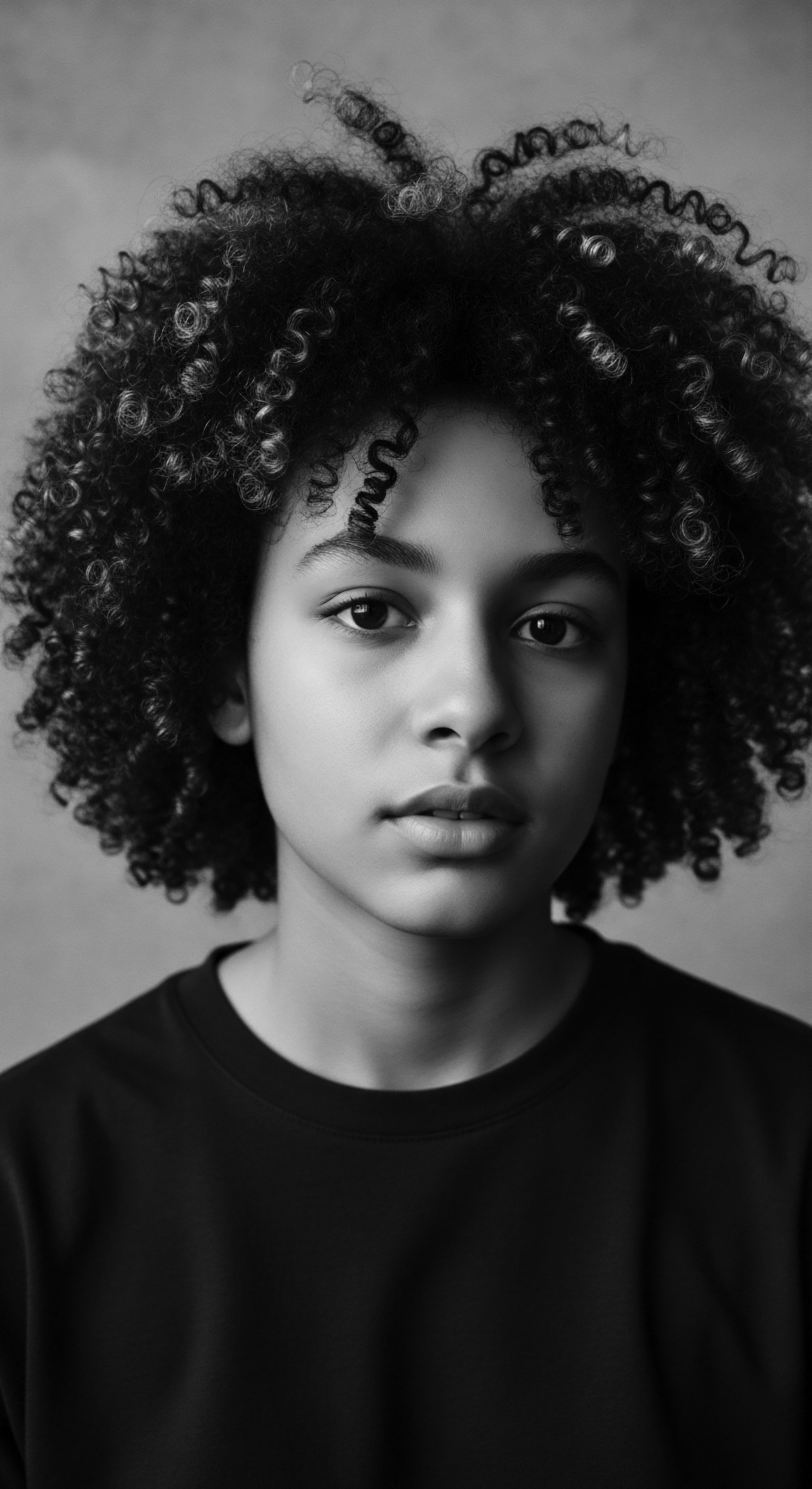
Roots
Consider for a moment the very strands that spring from the scalp, each one a unique testament to ancestry, a vibrant thread in a long and storied heritage. For those with textured hair, this connection runs particularly deep, far beyond mere aesthetics. It is a physical manifestation of lineage, a link to the wisdom of generations who understood the intimate reciprocity between nature’s bounty and physical well-being. The query at hand—can ancient plant oils truly provide lasting moisture for textured hair?—calls not for a simple answer, but for a thoughtful return to the source, a gentle examination of the foundational knowledge held within textured hair heritage .
For centuries, before the advent of synthesized compounds and complex formulations, our forebears looked to the earth, drawing sustenance and solutions from its generous embrace. Plant oils, pressed from seeds, fruits, and nuts, were not merely cosmetic aids; they were staples of daily life, imbued with a sacred quality. They were used for sustenance, medicine, and certainly, for the care of hair and skin. This historical lens is not a nostalgic gaze upon a bygone era, but a practical method to understand the capabilities of these botanical allies.

Hair Anatomy and Physiology from Ancestral Views
The coiled, crimped, and kinky patterns that distinguish textured hair types possess a unique architecture. Unlike straight hair, which allows natural scalp oils to travel down the shaft with ease, the bends and curves of textured hair create barriers, making it inherently more prone to dryness. This biological reality, while understood through modern scientific instruments, was certainly known by those who lived intimately with such hair. Ancestral wisdom recognized this predisposition, devising routines and utilizing substances that addressed this specific moisture deficit.
The very structure of a strand, its elliptical shape, its varying cuticle layers, dictates how it receives and retains moisture. These are characteristics that shape its journey from its very core.
Consider the historical perspective on this structure. In numerous African societies, hair was a direct symbol of one’s identity, social standing, and spiritual connection. The condition of one’s hair was therefore paramount. Dry, brittle hair would have been seen as a sign of neglect, diminishing one’s presentation within the community.
Thus, maintaining suppleness was not just about comfort; it was about honoring oneself and one’s place within the collective. The ancient oils served as protective balms, shielding delicate strands from environmental elements and assisting in maintaining physical integrity.

Traditional Lexicon of Textured Hair
The language surrounding textured hair in ancient traditions often went beyond simple descriptions of curl pattern. It spoke to the vitality of the hair, its strength, its capacity to hold styles that conveyed messages. Terms for hair often aligned with metaphors from nature, recognizing the living aspect of each strand.
While modern classification systems attempt to categorize hair by number and letter, traditional understanding was more fluid, more experiential. It was about how the hair felt, how it responded to touch, how it held the oils applied to it.
Ancient plant oils, integral to ancestral hair care, address the unique structural needs of textured hair, combating its natural dryness.
This knowledge informed the selection of oils. An oil that might work well on straight hair, creating a slick appearance, might not be as effective for truly nourishing a coiled strand that thirsts for hydration. The choice of oil was often dictated by observable results ❉ the shine it imparted, the softness it rendered, and, significantly, its ability to keep the hair pliable between care sessions. This was a practical science, honed through generations of trial and observation, each outcome carefully noted and passed down.
- Shea Butter ❉ A staple from West African traditions, valued for its creamy texture and moisturizing properties.
- Palm Oil ❉ Historically used for its conditioning attributes, particularly in Central and West Africa.
- Castor Oil ❉ A revered oil across various ancient cultures, recognized for its conditioning and thickening effects.

Hair Growth Cycles and Historical Influences
Hair growth is a biological process, yet its manifestations can be deeply affected by environmental factors, diet, and care routines. For generations, traditional diets, often rich in local plant-based foods, provided the internal nutrients necessary for healthy hair growth. External applications, such as plant oils, complemented this internal health by shielding the hair from physical damage and assisting in moisture retention, which, in turn, minimizes breakage and contributes to length retention.
Consider the Basara women of Chad , whose traditional use of Chebe powder , often mixed with oils or animal fats, has gained considerable attention for its remarkable association with extreme length retention, This practice, passed down for countless generations, is not simply about magic; it is a ritualized application of plant-based materials that seal the hair shaft, reducing moisture loss and mechanical breakage. The efficacy of such ancient methods, refined through centuries of observation, offers compelling evidence for the capabilities of plant oils in maintaining hair health and promoting its natural growth cycle by minimizing damage.
The historical perspective underscores a deep understanding ❉ hair care was not merely about quick fixes. It was a sustained commitment, a regular practice woven into the fabric of daily existence, reflecting a harmonious relationship with the natural world and a profound respect for one’s physical self. The oils chosen were not just for superficial gloss; they were chosen for their capability to provide substantial sustenance, creating an environment where the hair could truly flourish.

Ritual
The application of plant oils to textured hair has always transcended simple product use; it stands as a ritual , a deliberate act of care that connects the present with a vast and vibrant past. These practices, rooted deeply in textured hair heritage , reveal how ancient botanical extracts have been foundational to both the aesthetic and functional aspects of hair styling, shaping expressions of identity and community across generations.

Ancestral Roots of Protective Styling
Protective styles—braids, twists, cornrows, and buns—are far more than fashion choices. They are a profound legacy, originating from a necessity to shield delicate textured strands from harsh climates, physical exertion, and the rigors of daily life. For centuries, these styles were practical solutions for managing hair, minimizing tangling, and reducing breakage. Within these styles, plant oils played a central part.
They were used during the styling process itself, making hair more pliable and less prone to snap. They were also applied to the scalp and hair before, during, and after styling, acting as a sealing agent to hold hydration within the hair shaft.
The act of braiding or twisting often involved communal gatherings, turning hair care into a shared experience, a moment for storytelling and the transmission of wisdom from elder to youth. In these settings, the oils were not just applied; they were massaged in, their scents mingling with the sounds of conversation, each stroke a reinforcement of familial and communal ties.
The communal acts of applying ancient oils within protective styling traditions speak to a deep-seated heritage of care and connection.

Natural Styling and Traditional Methods
Beyond protective styles, ancient plant oils were crucial for natural styling and defining the inherent beauty of textured hair. Consider the use of shea butter in various West African communities. Its rich, buttery texture was ideal for coiling hair, for creating defined twists, or for simply conditioning hair worn loose.
The oil provided a weight and slip that allowed strands to clump together, enhancing their natural curl patterns while reducing frizz and static. This was achieved without the need for synthetic polymers or heavy silicones, relying instead on the inherent qualities of the botanical extract.
Such traditional methods were not about altering the hair’s natural state but about enhancing it, celebrating its unique form. The oils served to bring out the hair’s inherent luster, to soften its texture, and to make it more manageable for day-to-day wear. The application was often generous, allowing the oil to truly coat the hair, creating a barrier against moisture loss.
The Ouédraogo et al. (2013) study on traditional knowledge of native tree oils in Burkina Faso found that 14% of the identified plant oils were utilized specifically for hair care, a significant portion alongside their use for food, medicine, and body care (Ouédraogo et al. 2013). This research highlights the widespread and varied application of these oils within West African communities, affirming their historical utility.
| Oil Shea Butter |
| Traditional Application in Heritage Used extensively in West Africa for moisture retention, conditioning, and scalp health; often applied generously to braids and twists for protection. |
| Modern Scientific Understanding of Benefit Rich in fatty acids (oleic, stearic, linoleic) and vitamins, forming a protective barrier that reduces transepidermal water loss and provides anti-inflammatory properties for the scalp. |
| Oil Coconut Oil |
| Traditional Application in Heritage A staple in Ayurvedic and various African practices for strengthening hair, preventing protein loss, and adding shine; often used in hot oil treatments. |
| Modern Scientific Understanding of Benefit High content of lauric acid, allowing it to penetrate the hair shaft more effectively than other oils, reducing protein loss and oxidative damage. |
| Oil Argan Oil |
| Traditional Application in Heritage From Moroccan Berber communities, traditionally used to soften hair, address frizz, and provide a radiant finish. |
| Modern Scientific Understanding of Benefit Contains vitamin E and fatty acids (oleic, linoleic) that offer antioxidant properties and surface conditioning, contributing to softness and shine. |
| Oil Castor Oil |
| Traditional Application in Heritage Valued across ancient Egyptian, Indian, and African traditions for its conditioning properties and association with hair thickness. |
| Modern Scientific Understanding of Benefit Rich in ricinoleic acid, which is a fatty acid with humectant properties, drawing moisture from the air and coating the hair shaft, improving overall appearance. |
| Oil These oils embody a continuing wisdom, bridging ancestral methods with current understanding. |

Historical Uses of Hair Accessories and Oils
The tools and accessories used in textured hair care also tell a story, often working in concert with plant oils. Wooden combs, bone picks, and various adornments were not only stylistic elements but also facilitated the distribution of oils throughout the hair. The very act of combing or parting hair was often accompanied by the application of oils, ensuring that every section received its share of moisture and protection.
Consider the elaborate hairstyles of ancient African kingdoms, often adorned with beads, cowrie shells, or even gold. Such artistry required healthy, well-maintained hair that could withstand the weight and manipulation. Plant oils provided the suppleness and strength necessary for these complex styles to endure, reinforcing their symbolic and cultural weight. The durability imparted by these oils was not just practical; it meant the hairstyles, and the messages they conveyed, could last longer, a powerful statement of identity.
In the African diaspora, especially during times of immense challenge, hair care practices, including the application of traditional oils, became acts of quiet defiance, ways to preserve cultural memory and personal dignity. When access to traditional ingredients was limited, ingenuity led to adaptations, with women using what was available—often cooking oils or animal fats—to care for their hair, striving to retain some connection to ancestral methods. This adaptation speaks to the profound value placed on hair health and its link to heritage.

Relay
The enduring practice of using ancient plant oils for textured hair, and the question of their sustained moisture, becomes a powerful point of connection, a relay of wisdom across generations. It compels us to examine how ancestral knowledge and modern scientific inquiry coalesce, offering a profound understanding of holistic care that is deeply rooted in textured hair heritage .

Building Personalized Textured Hair Regimens
Creating a care routine for textured hair is not a one-size-fits-all endeavor; it is a personalized journey, often informed by the unique traits inherited through lineage. Ancestral wisdom, passed down through families, provided the foundational understanding of how to treat particular hair types within a community. This included knowing which oils were most effective for different textures, climates, and specific hair needs.
Contemporary science, with its ability to analyze the molecular structure of oils and their interaction with the hair cuticle, has in many ways validated these traditional choices. For instance, coconut oil , long a staple in regions of Africa and Asia, has been shown to penetrate the hair shaft more effectively than other oils due to its high lauric acid content, reducing protein loss. This scientific explanation provides a current understanding of what generations already knew through observation ❉ that coconut oil makes hair stronger and less prone to breakage.
The efficacy of these oils in providing lasting moisture hinges on their ability to act as emollients and sealants. They do not necessarily inject water into the hair, but rather, they coat the strand, slowing down the evaporation of water that is already present or has been applied. For textured hair, which is inherently more porous and susceptible to moisture loss, this sealing property is paramount for sustained hydration.

The Nighttime Sanctuary and Bonnet Wisdom
The nighttime ritual of protecting textured hair is a practice that carries deep historical significance, reflecting a continuous awareness of hair preservation. From carefully wrapping hair in cloths to the modern use of bonnets and scarves, the goal has always been to shield strands from friction and moisture depletion during sleep. Plant oils played a vital role in this nightly regimen, providing a layer of protection that worked in concert with the fabric covering.
The application of a light oil or butter before wrapping the hair helped to seal in the day’s hydration, ensuring that the hair remained soft and pliable by morning. This was not simply about preventing tangles; it was about maintaining the hair’s integrity, preventing the subtle damage that occurs from rubbing against absorbent pillowcases. This practice, often taught by mothers and grandmothers, is a continuation of a communal practice, a silent understanding of the importance of hair health.
Can Ancient Plant Oils Truly Provide Lasting Moisture for Textured Hair?
Yes, ancient plant oils can indeed provide lasting moisture for textured hair, but their mechanism is important to grasp. They primarily do so by creating a hydrophobic barrier on the hair shaft, effectively sealing in the moisture that has already been absorbed by the hair from water-based products or the environment. Unlike water, which rapidly evaporates from textured hair due to its unique structural characteristics, plant oils have a higher molecular weight and a different chemical composition that allows them to remain on the hair for longer periods.
This reduces the rate of moisture loss, keeping hair pliable and preventing dryness and breakage over time. Their lasting effect is not about direct hydration but about the retention of existing hydration.

Ingredient Examination for Textured Hair Needs
The vast array of ancient plant oils offers a spectrum of benefits, each with a unique profile. Understanding these profiles, both through ancestral application and scientific analysis, allows for a more informed selection for individual textured hair needs.
- Jojoba Oil ❉ Though from Native American heritage, its use in African American communities since the 1970s is historically significant, partly due to its similarity to natural sebum, making it an excellent scalp hydrator and moisturizer.
- Marula Oil ❉ A traditional oil from Mozambique and South Africa, it is recognized for its moisturizing effects and antioxidant content.
- Chebe Powder ❉ While not an oil itself, the Chebe ritual from Chad involves mixing this powder with oils or fats, demonstrating a centuries-old technique for sealing moisture and promoting length retention. The process creates a protective layer that helps prevent breakage.
These ingredients, and many others, were chosen not by chance but through sustained observation of their effects on hair. The effectiveness of plant oils rests on their ability to create a sustained, protective barrier that slows down moisture evaporation. This is especially critical for textured hair, which naturally has an open cuticle structure and a tendency to dry out quickly.
By forming a lasting film on the hair surface, oils act as an external stratum corneum, allowing the hair to retain its hydration, remain soft, and resist brittleness for extended periods. The continuity of their use across centuries speaks to their verifiable effect.

Holistic Influences on Hair Health
Beyond the physical application, the integration of ancient plant oils into hair care reflects a holistic philosophy where external beauty reflects internal well-being. Many ancestral traditions viewed the body as an interconnected system, where diet, spiritual harmony, and physical care were inseparable. Hair was a significant part of this equation, a barometer of one’s overall state.
The ceremonial aspects of hair care, often involving the deliberate preparation and application of these natural oils, speak to this broader perspective. The act of anointing the hair was not merely a physical process; it was a moment of grounding, of self-acknowledgment, and of reverence for the self. This holistic approach, passed through the lineages, emphasizes that sustained moisture is a result of consistent, mindful care, not just the properties of a single product. It is a dedication to nurturing the strand, a practice that honors the heritage of the hair itself.

Reflection
As we consider the enduring query of ancient plant oils and their capacity for lasting moisture in textured hair, we find ourselves tracing a lineage, a quiet echo of wisdom from epochs past. This is not simply a scientific inquiry; it is a communion with the very Soul of a Strand, recognizing each curl, coil, and wave as a living archive of human resilience and ingenious adaptation. The story of these oils is interwoven with the narrative of textured hair itself—a chronicle of survival, beauty, and unwavering self-possession. The legacy of ancient botanicals, from the communal shea butter preparations of West Africa to the precise, length-retaining rituals of the Basara women, extends beyond their chemical composition.
Their persistence in our routines speaks to a deep, inherent knowledge, a trust in earth’s generous hand. The wisdom these oils carry is one of sustained nourishment, of protective presence, allowing textured hair not merely to exist but to truly flourish, a vibrant affirmation of identity rooted in an ancestry of care.

References
- Ouédraogo, A. Lykke, A. M. Lankoandé, B. & Korbéogo, G. (2013). Potentials for Promoting Oil Products Identified from Traditional Knowledge of Native Trees in Burkina Faso. Ethnobotany Research and Applications, 11, 071–083.
- Phong, C. Lee, V. Yale, K. Sung, C. & Mesinkovska, N. (2022). Coconut, Castor, and Argan Oil for Hair in Skin of Color Patients ❉ A Systematic Review. Journal of Drugs in Dermatology, 21(7), 751-757.
- Ache Moussa, M. (2024, July 3). Ancestral hair-paste ritual gains new life in Chad. Premium Beauty News.
- Cosmetic Ethnobotany Used by Tribal Women in Epe Communities of Lagos State, Nigeria. (2024, April 19). Juniper Publishers.
- BeautyMatter. (2025, February 4). The Untold Story of Jojoba Oil in Black Beauty.
- Ancient Natural Ways of Hair Care Across Continents. (n.d.). 22ayur.com.
- Hair Care Practices from the Diaspora ❉ A Look at Africa, America, and Europe. (2025, January 23).
- African Beauty and Skincare ❉ A Deep Dive into History, Traditions, and Natural Ingredients. (2025, January 16).
